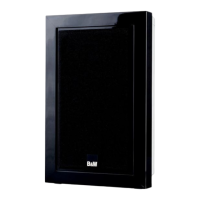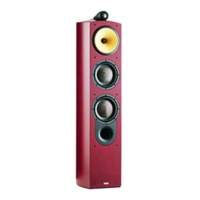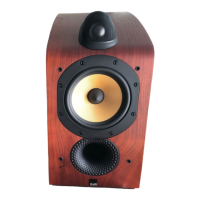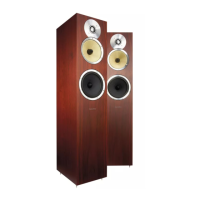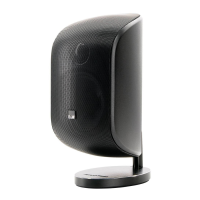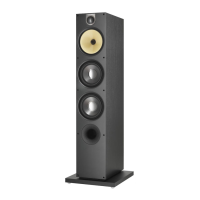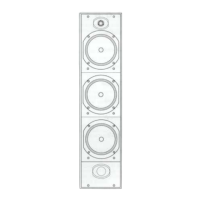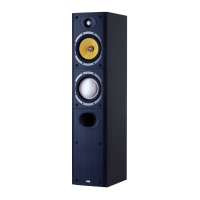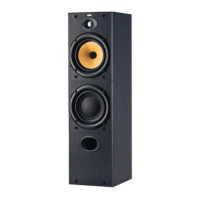B&W monitors are widely considered to be
the benchmark in music reproduction by
professional musicians and audiophiles alike.
The Matrix #801 has become the industry
standard monitor in recording studios around
the world, and it would be easy to rest on our
development laurels.
However, the team of audio scientists at
B&W’s Research Laboratories at Steyning
are perfectionists. For them, there are
always areas which could be improved
upon or refined.
Company founder, John Bowers, was
an exemplar of the type. For him, the most
glaring compromise in loudspeaker design
lay in the cabinet. The standard rectangular
enclosure only partially achieves its goal
of absorbing the rear radiation from the
drive unit.
Worse, it contributes resonances and
reflections from the inside, and diffraction
and reflection from the outside.
The B&W breakthrough of Matrix cabinet
construction offered a significant improvement
to the panel stiffness of the rectangular box,
but ultimately, the solution, John felt, was to
remove the cabinet completely and create
a dipole source. Sadly, time and ill-health
intervened to prevent John Bowers from
exploring this avenue of research further.
Custody of this work was passed to Matrix
inventor and top acoustic designer, Laurence
Dickie, with an enviable record of transducer
and cabinet problem solving. Laurence had
been experimenting with drivers mounted
in the curved surface of a cylinder and
encountered results not dissimilar to those
of the dipole.
Namely, that external cabinet effects could
be virtually eliminated and the intrinsic sound
of the unit heard.
Introduction
He used a ring magnet outside the coil with
a thin-walled cylindrical pole piece to allow
a smooth transition from dome to enclosure.
Only one type of enclosure will provide
absolute freedom from aberration – the infinite
pipe or waveguide.
Excitingly, it became possible to imagine
that an entirely waveguide-based system
could actually work. Research showed
that the exponentially tapered pipe was an
even better absorber than the cylinder. So
complete was its absorbing action that the
pipe could be left open or closed.
This was the breakthrough. Thereafter, the
usual disciplines of the acoustic engineer’s art
came into play. Juggling the variables of driver
diameter, dispersion, break-up, excursion,
practicality, and of course, economics.
It was decided that the system should
be four-way with 300mm (12in), 100mm
(4in), 50mm (2in) and 25mm (1in) units – all
mounted in tapered lines within a diffraction
limiting enclosure.
The enclosure evolved from the original
cylinder into the sleek rolling vent design
you have purchased. The massive rolling
vent disposes of rear bass driver radiation,
whilst the exponential transmission pipes
loading the other drive units effectively deal
with internal reflection and external diffraction
at mid and high frequencies.
The drive for sonic purity is reinforced by
using an active crossover design allowing
separate amplification of each drive unit,
cutting out component crosstalk and driver
inter-reaction. Overall, the elimination
of straight lines defeats diffraction and
helps achieve virtually transparent music
reproduction.
What results is arguably the most musical
loudspeaker ever made.

